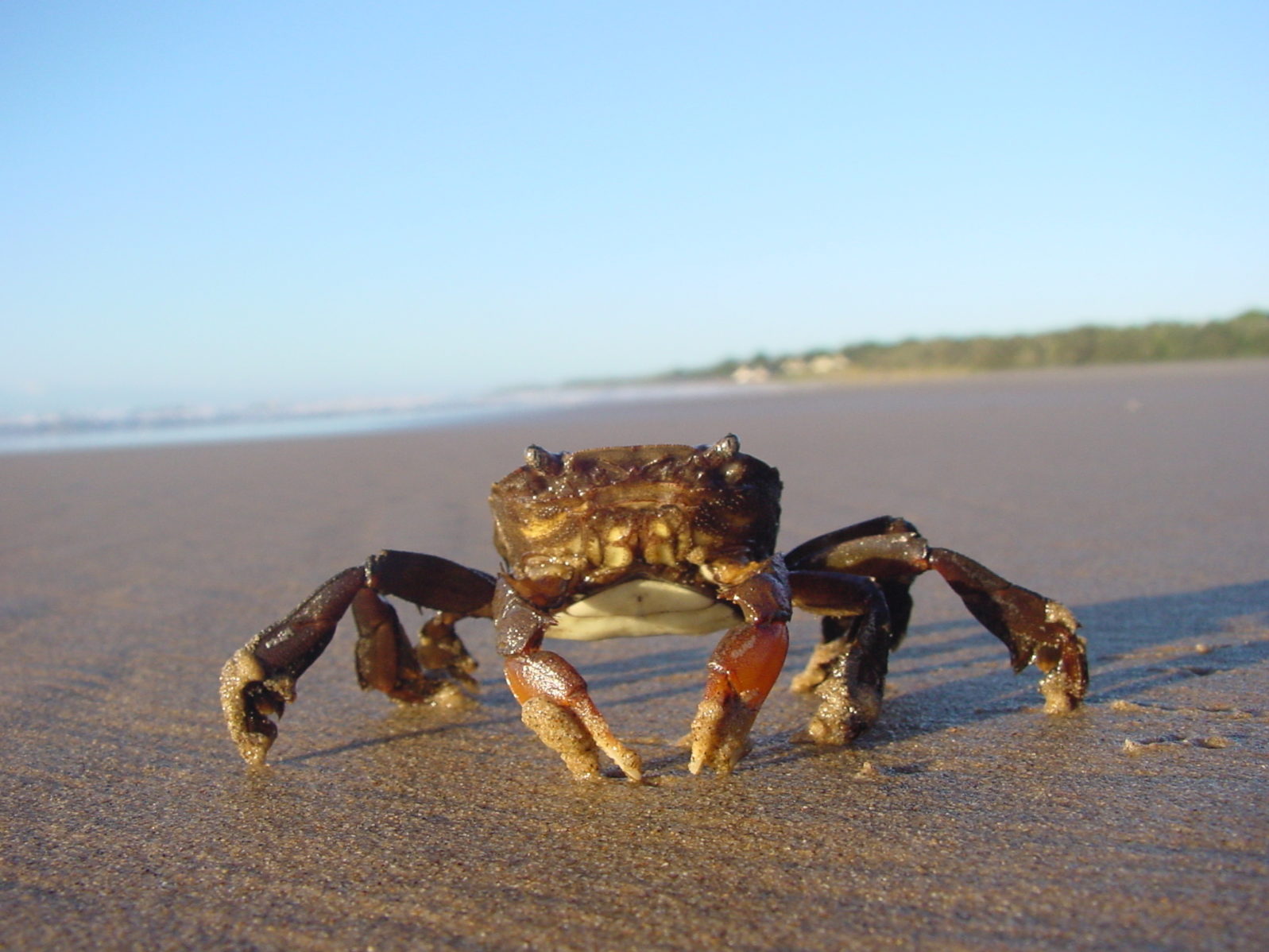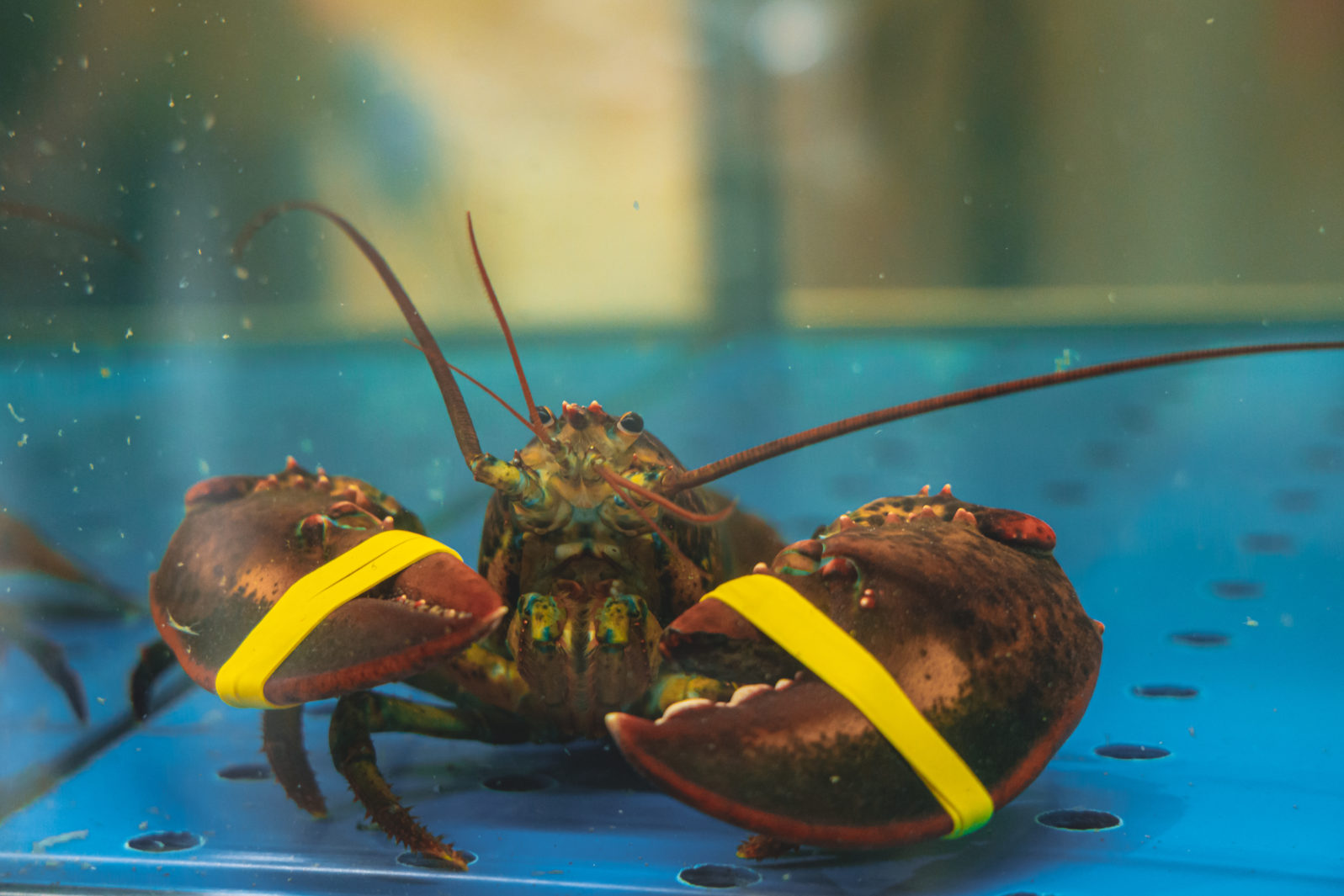Can Crabs Think? Can Lobsters Feel? What We Know Now
In Switzerland, it is now illegal to boil a lobster alive. Are the Swiss right? Is it cruel?
Because crustaceans have shells, we may tend to think of them as like machines. Yet crustaceans, along with octopuses, show some surprising abilities and complexities. Take crabs, for example:
A new Swansea University study has revealed how common shore crabs can navigate their way around a complex maze and can even remember the route in order to find food …
Spatial learning is quite complicated, so figuring out how it works in crustaceans gives us a better understanding of how widespread this ability, and learning in general, is in the animal kingdom.”
The researchers tested 12 crabs over four weeks, placing food at the end of the maze each time. The route to the end of the maze required five changes in direction, and included three dead ends.
Over the four-week period, the team saw the crabs show a steady improvement in both the time taken to find the food at the end of the maze and, crucially, in the number of wrong turns taken.
Even more surprisingly, when returned to the maze two weeks later but without any food on offer at the end, they all reached the end of the maze in under eight minutes — a clear sign that they had remembered the route.
New crabs which had had not been in the maze before took far longer to reach the end, and some did not make it to the end of the maze at all during the one-hour study period.
Swansea University, “Crabs can solve and remember their way around a maze” at ScienceDaily (October 22, 2019) The paper is open access.
Another thing about crabs is that they suffer from stress. Noise from ships rattles shore crabs:
… when crabs were subjected to a simulated shore bird attack, those that heard ship noise didn’t run and hide as they would normally. “About half of the crabs exposed to ship noise did not respond to the attack at all, and the ones that did were slow to hide themselves,” says Carter. “Similar to how people have trouble concentrating when stressed, the nature of their response indicates that they couldn’t process what was happening, as if that awareness and decision-making ability just wasn’t there.”
Cell Press, “Ship noise leaves crabs too stressed to hide from danger” at ScienceDaily (March 9, 2020) The paper is open access.
So some calculation is going on inside that shell, if only in the interests of finding the menu or not becoming the menu. But calculation goes on inside a computer too and we don’t think of the computer as a “being,” in any sense.
What about shrimp? Their brains turn out to have memory and learning centers, which has triggered an evolution squabble:
But the finding, reported in eLife, is likely to stir debate: Scientists agree that mushroom bodies evolved after the insect lineage split off from the crustacean lineage about 480 million years ago; finding these learning centers in mantis shrimp means that either mushroom bodies are much more ancient than scientists realized and were lost in all crustaceans but mantis shrimp, or that these structures are similar to their counterparts in insects but have evolved independently.
Giorgia Guglielmi, “Mantis shrimp brain contains memory and learning centers found only in insects” at Science (October 6, 2017)
But again, is anyone home inside that shell?
Now, with lobsters, it gets more interesting. Prominent psychologist Jordan Peterson has drawn attention to the complex social hierarchies of lobsters, which are partly governed by seratonin rewards:
Peterson argues that, like humans, lobsters exist in hierarchies and have a nervous system attuned to status which “runs on serotonin” (a brain chemical often associated with feelings of happiness):
The higher up a hierarchy a lobster climbs, this brain mechanism helps make more serotonin available. The more defeat it suffers, the more restricted the serotonin supply. Lower serotonin is in turn associated with more negative emotions – perhaps making it harder to climb back up the ladder.
Leonor Gonçalves, “Psychologist Jordan Peterson says lobsters help to explain why human hierarchies exist – do they?” at The Conversation (January 24, 2018)
In Switzerland, it is illegal to boil a lobster alive, due to the suffering caused. But does the lobster “feel” things in the way a human would understand?
First, lobsters don’t have a brain. What they have is a highly connected nervous system. They try to avoid shock and injury. But that may or may not be evidence of the experience of pain. An electronic system could be programmed to respond similarly but there isn’t anyone “inside” the electronic the system to experience the pain.
Part of the conundrum here is that we don’t know whether a crustacean like a crab, shrimp, or lobster has a sense of “self” — a minimal self, if you like.
A dog, for example, has a well-developed minimal self. He knows whose dog he is and where he stands with his house mates. He learns and he experiences pain and pleasure, just as humans do, though he does not reflect on his experiences or make moral choices. We assume that, if he suffers, he suffers pretty much as we would, without any of the consolations of abstract thinking. That fact probably makes his misery worse.
But now, let’s say if a crab learns something. Is its learning an attribute of a “crab self”? Or is it merely the learning of a natural automaton? Is there a lobster “self” to whom boiling alive is happening?
Perhaps it is ethically prudent to assume, along with the Swiss, that there may be a lobster self and take no chances. But we can’t really know at present.
We are left with a conundrum: How does a unified self that feels pain come to exist? And how do we distinguish between the use of information from the environment and self-awareness?
Note: Humane methods of killing lobsters include electrocution and rapid freezing.
You may also wish to read:
Octopuses get emotional about pain, research suggests. The smartest of invertebrates, the octopus, once again prompts us to rethink what we believe to be the origin of intelligence. The brainy cephalopods behaved about the same as lab rats under similar conditions, raising both neuroscience and ethical issues.
